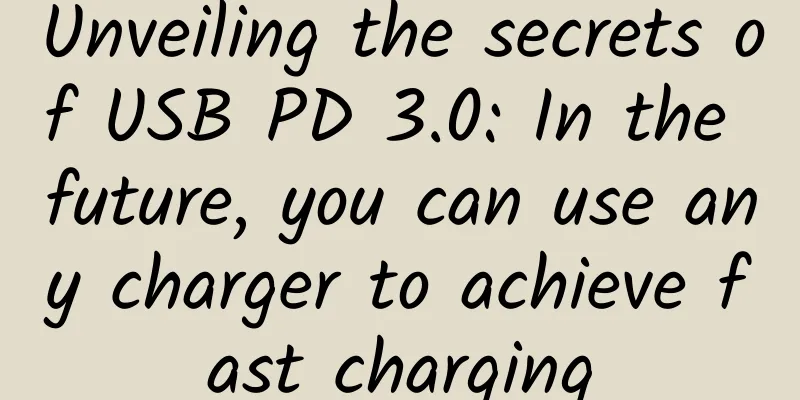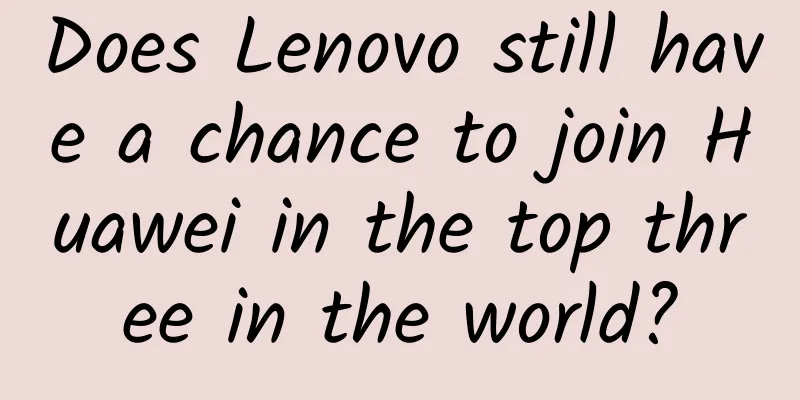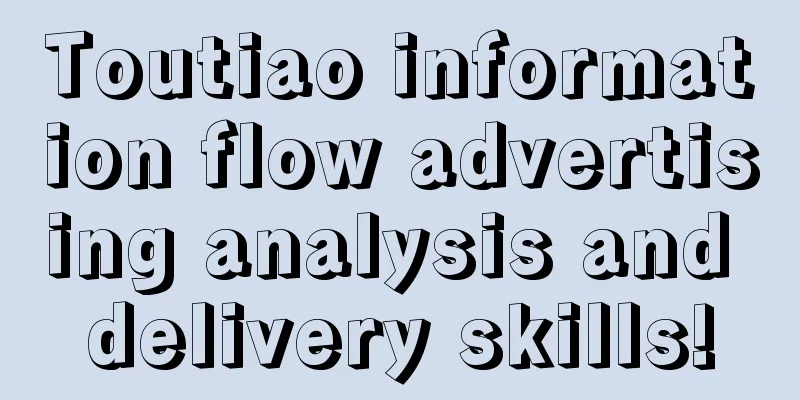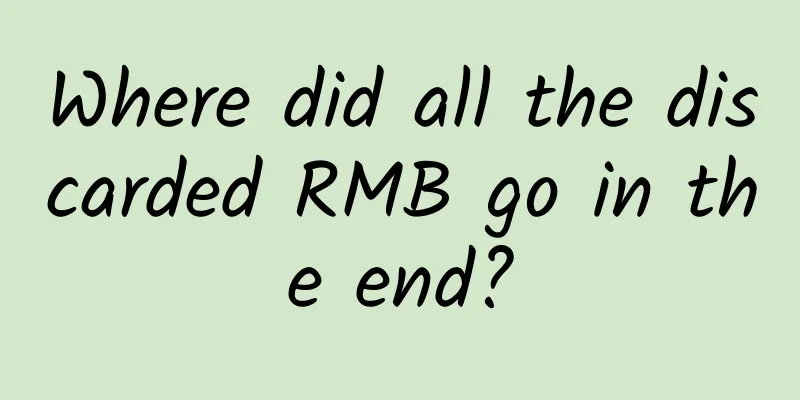Unveiling the secrets of USB PD 3.0: In the future, you can use any charger to achieve fast charging

|
The popularity of smartphones, coupled with the rapid update of high-energy-consuming hardware such as processors and screens, requires more powerful batteries to support smartphones. Nowadays, it seems that all mobile phone hardware is developing rapidly, but mobile phone battery technology has not been substantially updated. In order to ensure the power required for long-term operation of mobile phones, many manufacturers have built-in large-capacity batteries, but the increase in battery capacity will increase the charging time of mobile phones. Therefore, manufacturers have studied charging technology, and the fast charging that saves the country is born. Nowadays, fast charging has become a must-have feature for smartphones. Popular solutions include Qualcomm QC, MediaTek PEP, OPPO VOOC, Huawei FCP/Supercharge, USB PD, etc. Although they all quickly charge mobile phone batteries, the principles are different. It is common to see a pile of mobile phone chargers at home, and the fast charging heads of many mobile phone brands are not universal. In order to standardize the fast charging standard, USB-IF (USB Standardization Organization) recently released an important update of USB PD 3.0, which aims to unify the PPS (Programmable Power Supply) of the fast charging technical specification, so as to incorporate the solutions of Qualcomm QC4.0/3.0, MediaTek PE3.0/2.0, Huawei/OPPO, etc., and not allow the USB interface to adjust the voltage through non-USB PD protocols. If manufacturers write their own fast charging protocols into the PPS specification, then in the future, mobile phones that support fast charging can theoretically also achieve fast charging using fast charging heads (PPS specification) of other mobile phone brands. A brief introduction to existing mobile phone fast charging protocols Nowadays, more and more mobile phones support fast charging, but there are two main solutions: 1. High-voltage and low-current fast charging and 2. Low-voltage and high-current fast charging. The first solution is commonly used by Qualcomm QuickCharge, MediaTek PEP, Huawei FCP, etc., while the second solution includes OPPO's VOOC and Huawei's SuperCharge. The USB-PD protocol includes two parts: high voltage and low voltage. As we all know, P=UI, and increasing charging power is nothing more than increasing current or voltage, or both. However, voltage and current cannot be increased without limit, because both will cause the phone to heat up significantly. The first type of high-voltage, low-current fast charging is to increase the charging voltage (about 7-20V) during the charging process to increase the charging power. The charging process of a mobile phone without fast charging is generally to first reduce the 220V voltage to 5V through the charging head, and the internal circuit of the mobile phone then reduces the 5V voltage to 4.2V and then transfers the power to the battery. Heat energy will be generated during the entire voltage reduction process, while high-voltage, low-current fast charging is to increase the output voltage of the 5V charging head to 7-20V, and then reduce the voltage to 4.2V inside the mobile phone. The entire charging process will generate more heat energy, and the charger and mobile phone will have obvious heat, which is not conducive to improving charging efficiency. The second type of low-voltage, high-current fast charging is to increase the current under a constant voltage (4.5V-5V). Generally, parallel circuits are used for shunting. Under constant voltage, the less pressure each circuit bears after parallel shunting, the less pressure each circuit will bear if the same treatment is performed in the mobile phone. For example, VOOC flash charging increases the carrying capacity of large currents by increasing the number of lines in the charging cable/the number of contacts in the USB port. The principle of Huawei SuperCharge fast charging is similar. Avoid high heat caused by the conversion from "high voltage to low voltage" inside the fuselage. USB PD 3.0: covers both high voltage and low current, and low voltage and high current USB PD 3.0 specifies the voltage output range: 3.0V~21V, and the step amplitude modulation voltage is 20mV. This includes two parts: low voltage/high voltage. Based on the previous PD protocol current data (1.5A, 2A, 3A and 5A), this USB PD 3.0 will be able to simultaneously realize two fast charging solutions: high voltage/low current and low voltage/high current. In addition, the voltage modulation step is 20mV. The overall idea integrates the high voltage and low current of Qualcomm QC fast charging (also using step modulation voltage to ensure charging efficiency) and the low voltage and high current of VOOC flash charging. In short, USB PD 3.0 absorbs the essence of current fast charging and re-integrates it into a "big and complete" fast charging solution to achieve unified mobile phone fast charging. All mobile phones that support fast charging can be fast charged through a charger that supports PPS technology. Back to the era when all mobile phones are not afraid of one charger. At present, USB PPS has reached a consensus with my country's Ministry of Industry and Information Technology's Telecommunication Technology Laboratory. At the same time, Google emphasized in the latest Android 7.0 OEM specification: For mobile phones using USB interfaces, fast charging technology must support USB PD. It’s so great in theory, will PD3.0 become popular in 2017? Just as the Android system specified by Google must use the three virtual buttons on the screen, USB PD 3.0 may also be difficult to popularize. Major manufacturers will still choose the fast charging solution they think is the best. After all, the local environment nurtures the local people, and the local environment shapes the local habits (it is so high-end because of the interests, okay, I won’t go into it in depth). USB PD 3.0 is like the nine-year compulsory education, providing a set of standard solutions for those novice manufacturers who have no idea how to use fast charging or have just entered the mobile phone field (of course, the landlords will still promote their own fast charging technology). Even though Google stipulates that if the mobile phone with Android 7.0 has a standard USB interface, its fast charging must be based on USB PD, I guess only a small number of models will follow this regulation, and most will adapt to their own. In addition, there are really few third-party mobile phone chargers on the market that support PPS technology, so it is difficult to quickly popularize it in 2017. What will the popularization of USB PD 3.0 bring? There is no doubt that the popularization of USB PD 3.0 is a good thing for users. Nowadays, various fast charging technologies are developed by manufacturers themselves. The conditions for fast charging are harsh. Mobile phones, chargers, and data cables are all in a one-to-one correspondence. The popularization of USB PD 3.0 can get rid of this dilemma. All mobile phones of different brands, fast charging chargers and data cables of different brands will be universal. You no longer have to look for chargers and data cables all over the house. As a winner of Toutiao's Qingyun Plan and Baijiahao's Bai+ Plan, the 2019 Baidu Digital Author of the Year, the Baijiahao's Most Popular Author in the Technology Field, the 2019 Sogou Technology and Culture Author, and the 2021 Baijiahao Quarterly Influential Creator, he has won many awards, including the 2013 Sohu Best Industry Media Person, the 2015 China New Media Entrepreneurship Competition Beijing Third Place, the 2015 Guangmang Experience Award, the 2015 China New Media Entrepreneurship Competition Finals Third Place, and the 2018 Baidu Dynamic Annual Powerful Celebrity. |
<<: BYD achieved its second 5 million sales in just 15 months
>>: IEA: India's natural gas market outlook report to 2030
Recommend
Born for massive film and television resources: TCL iQIYI TV+L48A71C review
Competition in the smart TV industry is becoming i...
About 120 million years old! Do you know Zhoushan's "sea bonsai"?
Zhoushan Islands There are tall, wide, fairy-like...
Google starts testing voice payment. Can you really pay with your mouth?
With the advancement of technology, the means of ...
What is Kunming?
All along Kunming They are all well-known "S...
Information flow advertising landing page planning methodology!
The 7 creative rules for information flow adverti...
Trumpchi and Huawei's joint innovation plan is upgraded again: Soul resonance opens a new era of intelligent electric
September 24, Songshan Lake, Dongguan. GAC Trumpc...
Will walking after a meal cause gastroptosis? How should you “walk a hundred steps after a meal”? Today we finally have the answer!
gossip When many of my friends were young, they w...
Nanjing Hearthstone CEO Zhu Wei: Mobile game development can also be "unconventional"
In early 2015, Newzoo, a game industry research o...
A must-know question for young people: What is the May Fourth Movement?
Mixed Knowledge Specially designed to cure confus...
Why app design hurts app development
[[142621]] Mobile apps have become so ubiquitous ...
Google has returned to China with its head down. Can it pay the price for its past willfulness?
Recently, there is news that Google has made a pr...
I have been wrong for many years! Glasses cloth cannot be used to clean glasses
For people who wear glasses, it is easy for glass...
How many layers does the sky have?
Please turn your phone over Today’s “journey to h...
About to be "launched", what happened to the United Launch Alliance?
Recently, according to foreign media reports, the...
User growth fission method!
“Create 50 communities in 48 hours at zero cost” ...









